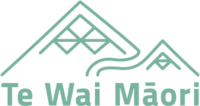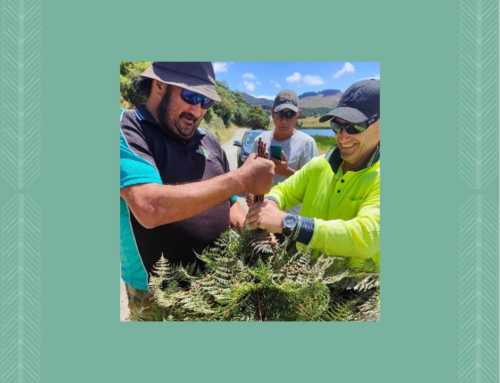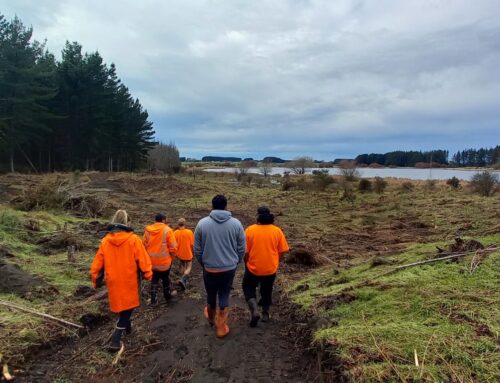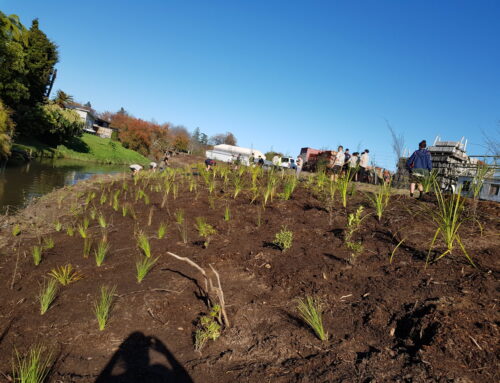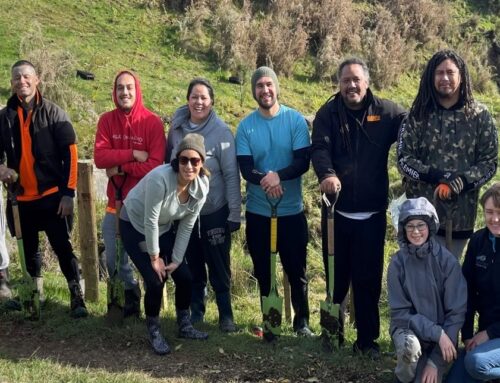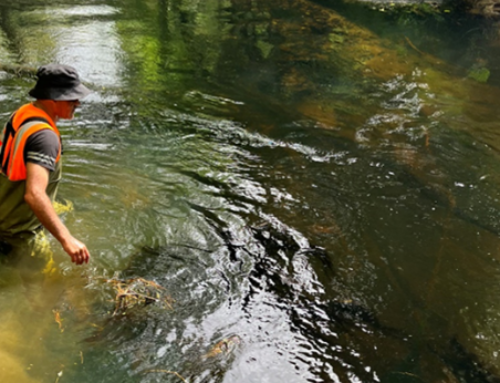About the project
The Lake Ōkataina Taonga Fisheries Project is a joint collaboration between Te Arawa Lakes Trust and Ngāti Tarawhai Iwi Trust to undertake baseline kōura assessment using traditional Tau Kōura methods on Lake Ōkataina. Lake Ōkataina is one of fourteen lakes within the Rotorua region and is located 30 minutes from the Rotorua city centre on State Highway 30.
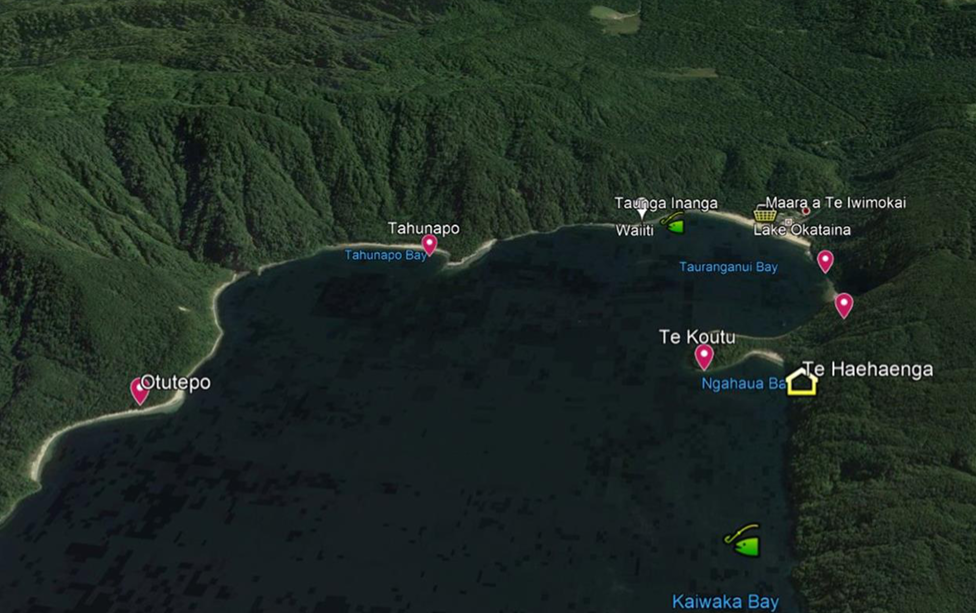
Lake Okataina and surrounding lakes
The Lake Ōkataina Taonga Fisheries Project enabled local hapū members to actively participate in kōura monitoring under the expert guidance of local expert, Dr Ian Kusabs, supported by Joe Butterworth and environmental experts from Te Arawa Lakes Trust.
This project sought to provide the hapū of Lake Ōkataina with a knowledge base about kōura species within the Te Arawa lakes – via a baseline assessment project and ongoing monitoring and to identify ways in which mohiotanga māori, tikanga and kawa can be used to monitor taonga fish species within Ōkataina and the streams and tributaries feeding into Ōkataina. This knowledge and these skills will support them to fulfil their role in future as the hunga tiaki of the Lake and waterways.
Our taonga fish species, which include kōura, kākahi and koaro, are indicators of lake health. Prior to the arrival of trout and other exotic species the Te Arawa Lakes teemed with food prized by Māori. These foods consisted of: kākahi, Kōura. Inanga, Toitoi , Kokopu Of these the most famous was the kōura.
It is envisaged that to understand the full extent of the abundance and distribution of the range of species on Lake Ōkataina and its tributaries there will be a programme of work over a number of years. This project has successfully covered the first part of the journey which was to assess how things are (e.g. the current state of our taonga fish species via physical monitoring) and how things used to be (via koeke interviews and wānanga) to guide where and we focus future mahi; Kia whakatōmuri te haere whakamua.
The key to achieving this for the long term and ensure intergenerational transfer of knowledge was to engage hunga tiaki of these lakes and waterways in the monitoring project and learn from our koeke through wānanga attended by hapū and iwi members.
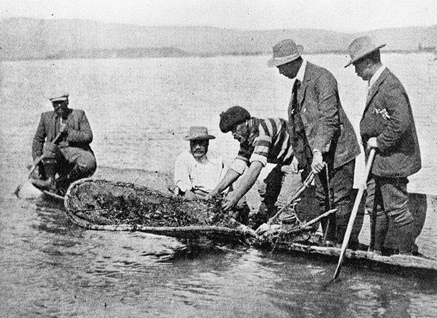
Koura i ngā wā o mua
Key findings
- The combination of western scientific knowledge systems and hapū traditional knowledge provides a ‘kete’ 2of knowledge and understanding that can inform decision making by hapū, iwi and others.
- Kōura numbers, size, weight and their health compared to other Lakes is known and provides a baseline from which to monitor kōura moving forward.
- Traditional methods of kai gathering were as much for collecting kai as they were mechanisms for measuring abundance and the health of species; they were designed to catch all sizes and could be adapted to catch in quantities that were required. In a contemporary setting they make the perfect method for monitoring a range of species as well as the full life cycle of the kōura.
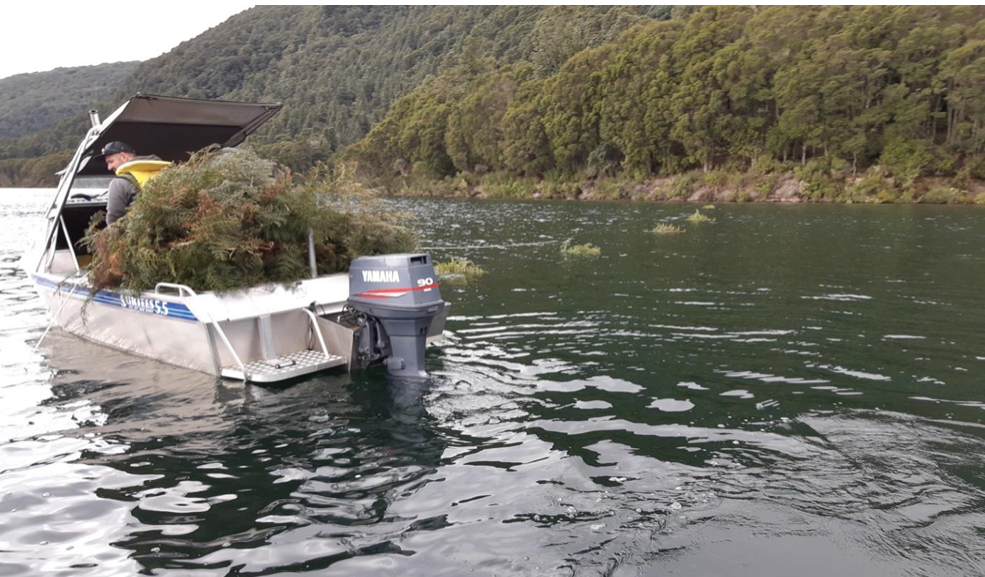
Photo credit: Cyrus Hingston Bundles of Whakaweku being deployed into Lake Ōkataina
- The ongoing practice of making, preparing and setting the tau kōura enables the telling of historic events and encounters, the sharing of whakapapa and the practice of observing nature and its health. Cultural practices will continue to be a means of keeping traditions and whakapapa strong.
- In a contemporary setting the revival of all of these cultural practices as the skills and capabilities of hunga tiaki will also contribute to the revitalization of te reo o Te Arawa, te reo o o ngā wai, and the enhance the ongoing transfer of intergenerational knowledge such as whakapapa and the understanding of the sites of significance on the landscape.
- The ongoing practice of tau kōura and the active participation of hapū and iwi in the role of hunga tiaki will ensure the ongoing survival and enhancement of the taonga species in Lake Ōkataina
- Critical success factors include: clearly outlining the roles and responsibilities of the Partners, ensuring the networks of experts, hapū leaders and TALT are well utilized and widening the opportunities for capacity building throughout the life of the project.

